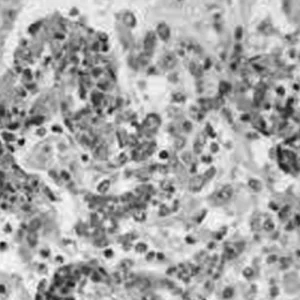Preclinical research frequently employs rats as small-scale animal models. Wistar rats are a well-characterized rat model known for its broad applicability in pharmacology, toxicology, and oncology studies. Therefore, many studies have included Wistar rat serum to evaluate the biochemical changes due to disease or treatment.
Wistar Rat
The use of rats in biomedical research began almost 160 years ago, introducing them as the first mammalian species in science. Since then, their use in investigative studies has grown. Their short lifespan and small size enabled disease modeling and understanding of physiological processes. Wistar rats are one of the earliest standardized rat models for research. It is an outbred albino strain created at the Wistar Institute in 1906. Long body, short tail, wide head, and long ears are their key features.
Their easy availability and breeding have encouraged their use. They are also compatible with genetic engineering, resulting in the development of many other strains, such as Lewis rats, Sprague-Dawley rats, Lobund-Wistar, Wistar Kyoto rats, spontaneously hypertensive rats, etc. They have been a popular rat model due to their well-studied genetic, physiological, and biochemical characteristics. Therefore, they are widely used to study metabolic syndrome, pharmacology, behavior, etc.
Wistar Rat Serum
Serum provides a direct insight into tissue toxicity or dysfunction. Therefore, scientists prefer to analyze serum parameters in addition to studying tissue-specific properties. Numerous researchers have worked on Wistar rats and reported their biochemical and hematological parameters. The values of these parameters depend on age, sex, nutrition, stress, sexual activity, etc. This knowledge about the reference values and effects of various factors has been valuable for researchers. The effect of treatment or disease, reflected in serum composition, can be compared easily with the reference values to reach a logical conclusion. Therefore, it has been popular in the scientific field.
Isolation of Wistar Rat Serum
The isolation process requires either anesthetizing or euthanizing the rat to extract blood from the tail vein or by cardiac puncture. The incubation of blood at room temperature in a standing position for 10-30 minutes allows the coagulation to occur. Thereafter, a brief centrifugation separates serum in supernatant from clotted blood. After pipetting out the serum, its storage at -80˚C will preserve it for future use. However, serum values of Wistar rats depend on various factors such as age, gender, dietary intake, fasting time, circadian rhythm, collection time, etc. Moreover, studies have also revealed that preservation at low temperatures does not have any effects on human sera but might change a few parameters in that of wistar rat. Therefore, it is essential to keep the research objective in mind before using wistar rat preserved serum.
Applications of Wistar Rat Serum in Research
Diabetes Research: Diabetes has been a constant subject of investigation. Many researchers have used Wistar rats to study and analyze the serum concentration of glucose and insulin. It has led to the development of diabetic rats, which facilitated the modeling of the disorder and assessment of novel therapeutics. For example, a study proved the hypoglycemic effects of a tropical vegetable by demonstrating the changes in serum GLP-1 levels.
Renal Research: Acute kidney injury, renal ischemia-reperfusion injury, and kidney transplantation are the common areas of renal research. Wistar rats provide an appropriate model for renal research due to their easy availability and compatibility with surgical interventions. Levels of various serum parameters like creatinine, albumin, potassium, sodium, urea, etc., evaluate kidney function pre- and post-treatment. The collection of sera at different time points offer deeper insights into drug and disease kinetics.
Aging Studies: Due to their short life span, age-related changes can be more easily noticeable in Wistar rats. Many neurological and physiological impacts of age have been studied on them. For instance, a groundbreaking study reported that aged rats have high concentrations of cholesterol, LDL, glucose, and triglycerides that increase their susceptibility to obesity and diabetes.
Hepatic Research: The rising incidence of liver disease has spurred considerable research in this field. A preclinical animal model is crucial to validate the in vitro findings. A suitable animal model should show susceptibility to disease development and progression. Carbon tetrachloride (CCL4) causes liver injury, resulting in fibrosis and cirrhosis and is therefore, the suitable method to model liver damage. The susceptibility of Wistar rats towards CCL4 makes it an apt animal model for liver diseases. Serum levels of bilirubin and liver enzymes such as alkaline phosphatases, transaminase, glutamyl transferase, etc., can inform about the disease progression and the effect of treatment.
Cancer Research: Wistar rats are susceptible to spontaneous tumor development. Therefore, it is easy to induce cancer in them with carcinogens like sodium phenobarbital, methyl nitrosourea, polycyclic aromatic hydrocarbons, etc. The alterations in the levels of cancer biomarkers in the rat serum can determine the anti-tumor effects of the treatment. Additionally, this research can detect new cancer biomarkers with enhanced specificity and early diagnosis.
Obesity: Obesity increases the risk of pathological complications such as hypertension, diabetes, cardiac disorders, liver disorders, etc. The investigation into obesity and its effects on different tissues requires an appropriate animal model. Wistar rats are prone to diet-induced obesity and show pronounced changes in their serum biochemical profile. Several studies have analyzed the markers such as cholesterol, glucose, and hormones to examine the pathological features and treatment effects.
Inflammation: Several acute and chronic inflammation studies have utilized Wistar rats. The serum cytokine profile indicates the pro-inflammatory and anti-inflammatory effects of a therapeutic product. Measurement of C-reactive protein, haptoglobin, and inflammatory mediators such as TNF (tumor necrosis factor), IL6, IL1, etc., delineate the inflammatory pathways.
Drug Screening: Drug screening routinely uses Wistar rats to measure drug metabolism and drug-induced toxicity. Along with histopathological changes, these screening studies also evaluate hematological parameters, including blood cell count, tissue-specific biochemical markers, and disease-specific biomarkers. Serum also enables the study of ADMET properties of drugs and their pharmacodynamics. The use of biomarkers also assists in defining drug dosage, duration, and administration route.
Product-Related Queries, Or Partnership Inquiries
The Concluding Remarks
Wistar rat is a popular rat model. Its genetic profile and serum parameters have been studied in detail in numerous diseases and physiological changes. The availability of normal or baseline reference levels of serum markers has contributed significantly to biomedical research. Its use ranges from toxicological and tissue-specific research to cancer research.
However, the age, gender, fasting condition, and collection time affect the serum composition. Therefore, reduction of this unpredictability during experimentation is essential, even though it might be useful in some investigations. With possible clinical relevance, serum analysis can provide additional knowledge on the course of a disease and the effectiveness of treatment. Kosheeka offers Wistar rat serum customized for donor characteristics and screened for contamination.
FAQs
Q – What is the Wistar rat model?
It is an outbred albino strain with a wide head, long ears, short tail, and long body. It is routinely used in biomedical research.
Q – What are the applications of Wistar rat serum?
It is used in different research areas, such as diabetes, cancer, drug screening, inflammation, and liver diseases.
Q – What is the Wistar rat preserved serum?
Preserved serum refers to the serum stored at -80˚C after isolation from rats.
Q – What factors affect Wistar rat serum composition?
Its composition varies according to different physiological factors, such as dietary intake, age, gender, and isolation time.



